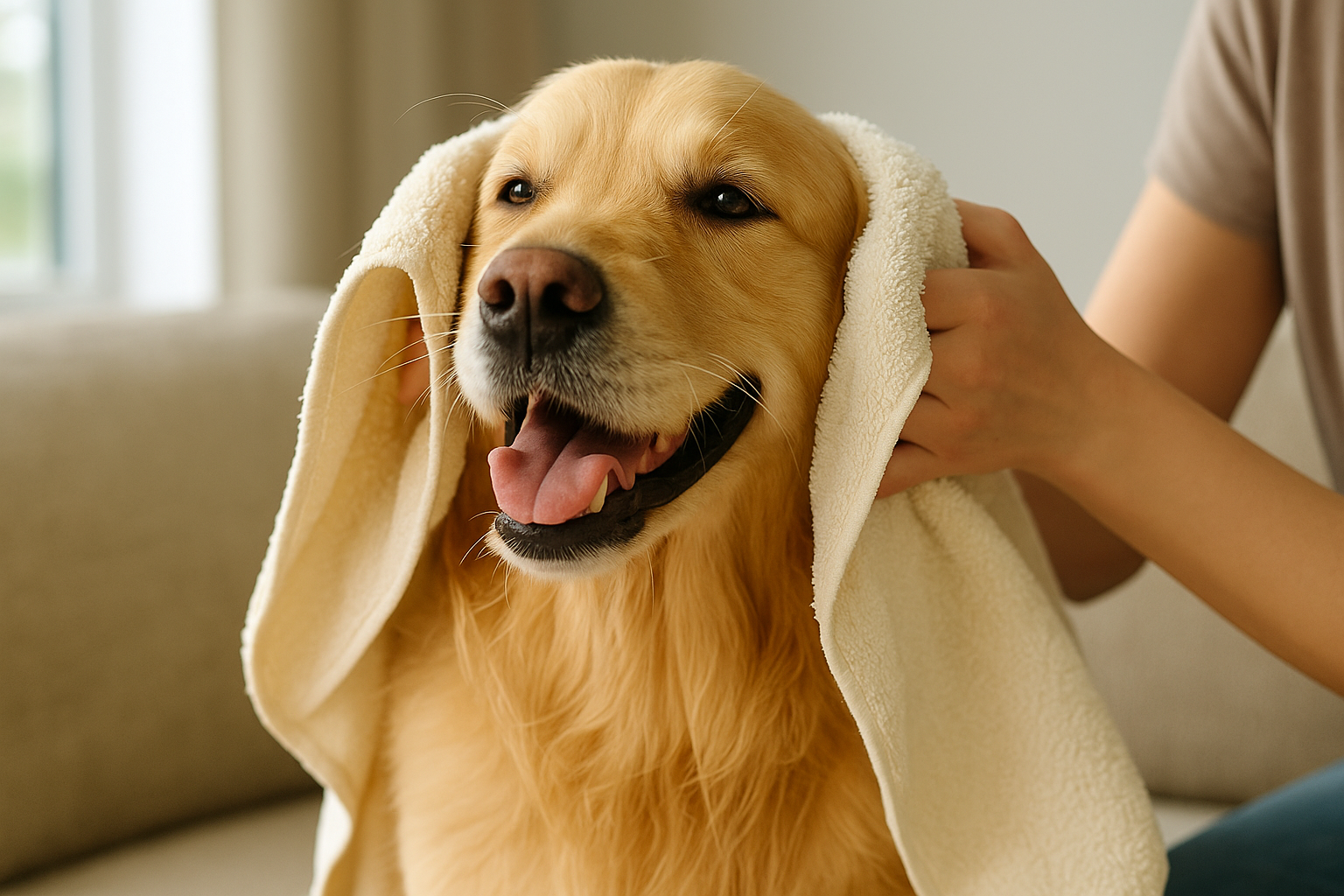Many pet owners dream of peaceful bath times, but for some animals, even the sound of running water causes panic. Wet fur, strange scents, and slippery surfaces can make traditional bathing an ordeal for pets and people alike. Fortunately, you no longer need to choose between cleanliness and your companion’s comfort: dry bathing delivers effective results without a single splash.
This comprehensive guide explains how to use dry grooming methods to keep your pet clean, calm, and healthy—making life simpler for both of you.
Why Pets Sometimes Dread the Tub
Instead of stubbornness, resistance to water often stems from fear or discomfort. Some pets react to the unfamiliar sensation of water or loud noises, while others remember a past bad bath experience. Aging animals or those with painful joints may find it physically difficult to stand in a slippery tub. Rescue pets, still adjusting to new routines, might be especially startled by water-based grooming. Recognizing the real reasons behind their anxiety is the first step toward a kinder solution.
What Is a Dry Bath?
A dry bath offers a practical alternative that skips rinsing and soaking. Using specialized sprays, foams, powders, or wipes, dry baths draw out natural oils, trap dirt, and refresh a pet’s coat—all without stress or mess. They aren’t a complete replacement for traditional bathing, but they’re perfect for in-between refreshes, animals with health concerns, or times when a water wash is impossible.
Exploring Your Dry Bath Choices
1. Waterless Shampoos
These foams and sprays are designed for simple application: spread them on your pet’s fur, massage in, let them lift away grime, then brush out the residue. The best waterless cleansers use gentle ingredients to avoid skin irritation and maintain a healthy coat.
2. Absorbent Powders
Products made from starches or clays soak up excess oil and help deodorize fur. Scatter lightly over the coat, distribute with your hands, give it time to work, then thoroughly brush out every trace. Powders are especially handy for pets prone to oiliness or strong odors.
3. Grooming Wipes
Pre-moistened and formulated for pets, wipes handle small messes with ease. They’re ideal for wiping muddy feet, cleaning delicate areas, or doing a quick tidy-up after walks. Always choose wipes labeled as safe for sensitive skin.
4. Cleansing Mitts and Towels
Special mitts deliver gentle cleaning while allowing you to comfort your pet through touch. These are helpful for animals who prefer being stroked rather than brushed or sprayed.
Choosing Products With Care
A pet’s skin is delicate and should never be treated with human products. Select items that are:
- Designed for animals, with clearly listed ingredients
- Free of harsh chemicals, parabens, or artificial fragrances
- Enriched with soothing elements like chamomile or aloe
Avoid anything alcohol-based or with sharp scents. When in doubt, consult your veterinarian or pet groomer for recommendations.
Ideal Situations for Dry Bathing
Dry grooming is a valuable option for:
- Senior pets who tire easily or have reduced mobility
- Nervous animals who dislike water
- Pets healing from surgery or with bandages/stitches
- Messes that aren’t severe enough for a full bath
- Cold climates where drying would be uncomfortable
Always follow a routine suited to your pet’s specific health and living environment.
Dry Bathing Made Easy: Step by Step
Pick a quiet spot: Minimize distractions for a relaxed experience. Let your pet sniff the product: Familiarization builds trust. Work in small sections: Start at the back, moving methodically. Apply gently: Massage or wipe, depending on the product. Brush thoroughly: Remove loosened dirt and remaining product.
- End on a high note: Praise and reward your pet for cooperation.
Smart Grooming Habits
Include dry baths as part of a larger grooming routine. Regular brushing, checking your pet’s ears and paws, and trimming their nails all contribute to better hygiene and comfort through every season.
When Only Water Will Do
Sometimes, nothing but a traditional bath will suffice—like when your pet has caked-on mud, or its fur needs medicated shampoo. Use dry methods as needed, but still plan for periodic complete washes to maintain skin health.
Safety Reminders
- Limit dry bathing to a reasonable frequency (often once a week)
- Try products on a small area before widespread use
- Keep all tools and bottles clean and out of reach
- Watch for any unusual skin reactions
- Store items away from children and pets when not in use
The Deeper Benefits
Grooming, especially when calm and noninvasive, does more than clean. It nurtures your relationship, builds trust, and offers a chance to notice subtle health changes early. By making dry baths a regular—and gentle—ritual, you ensure your pet’s well-being while strengthening your unique bond.
Quick Reference for Dry Bath Success
- Choose products made specifically for pets
- Maintain a soothing environment
- Always follow with brushing and positive reinforcement
- Mix dry baths with standard grooming practices for long-term cleanliness
With a thoughtful approach and the right products, dry baths become far more than a cleaning shortcut—they’re a way to care deeply for your pet, inside and out.
Would you prefer this text tailored for cats, dogs, or another species?
